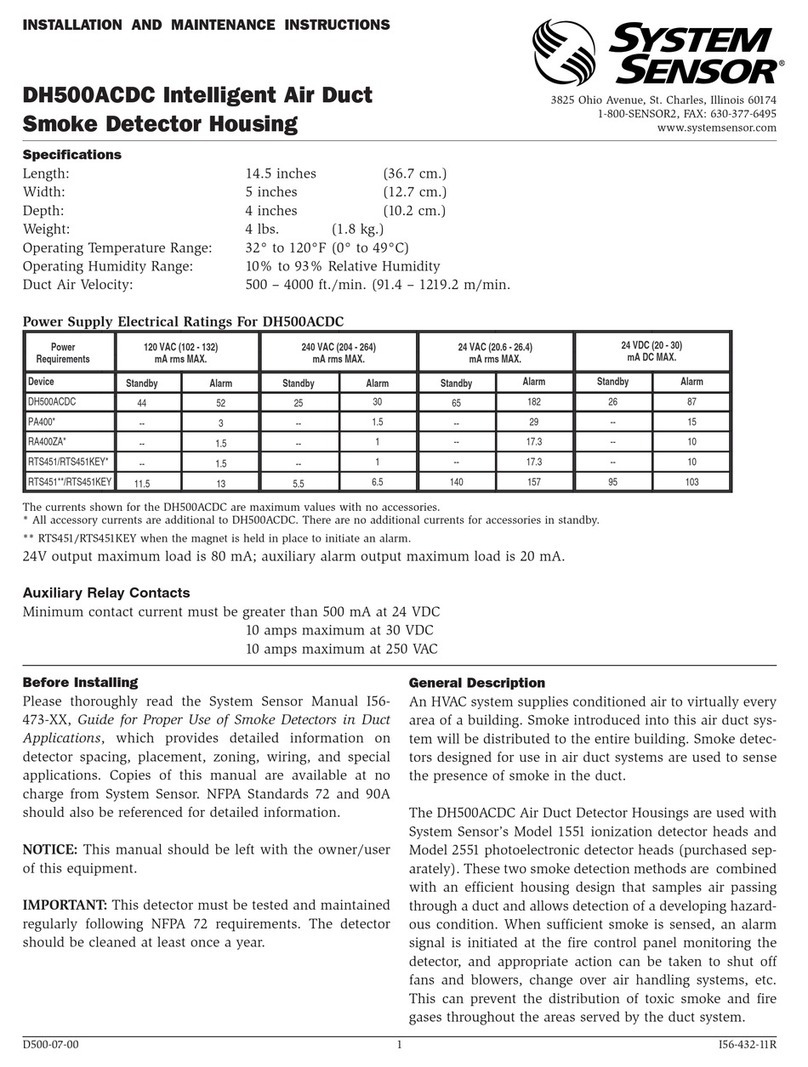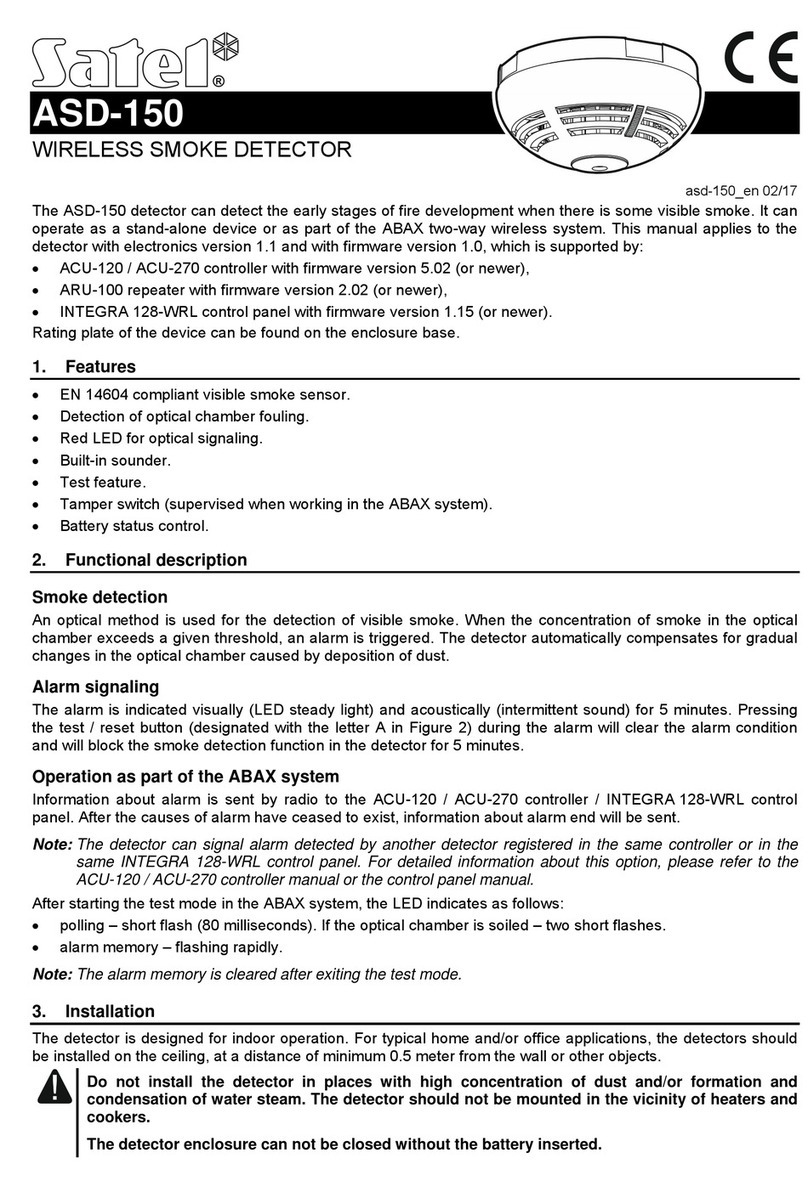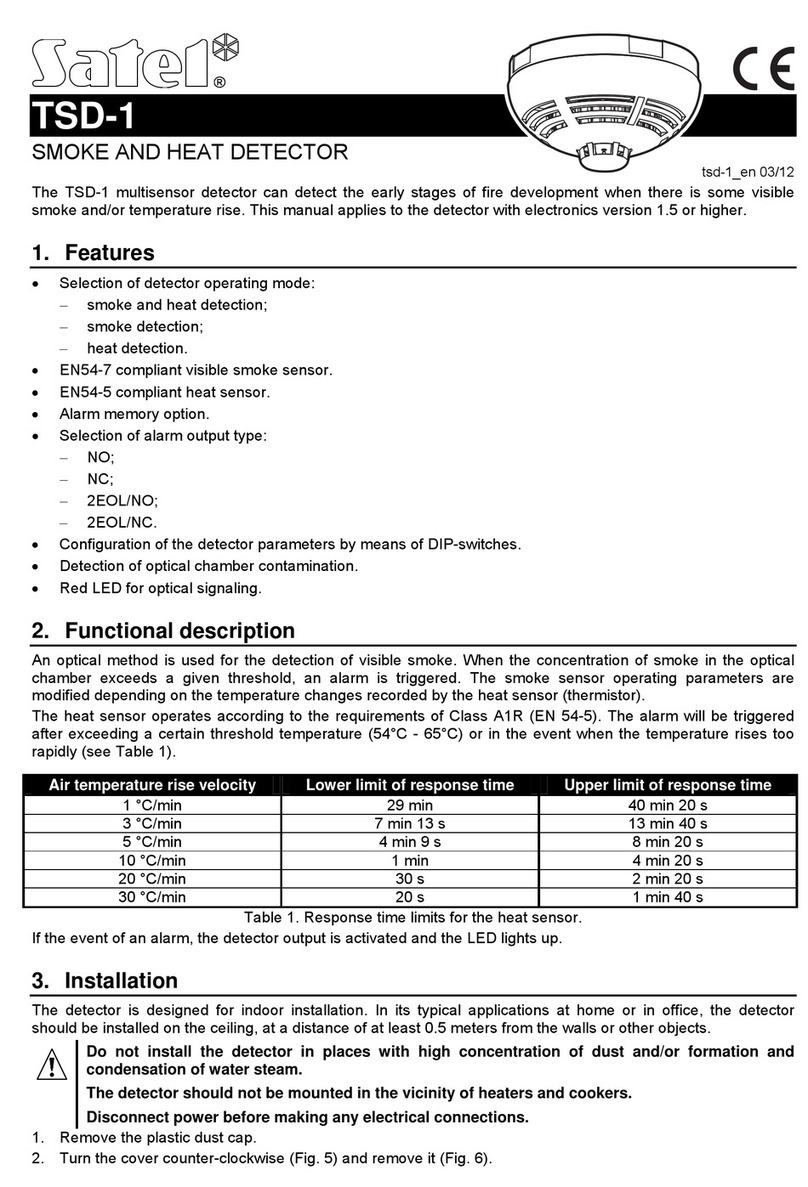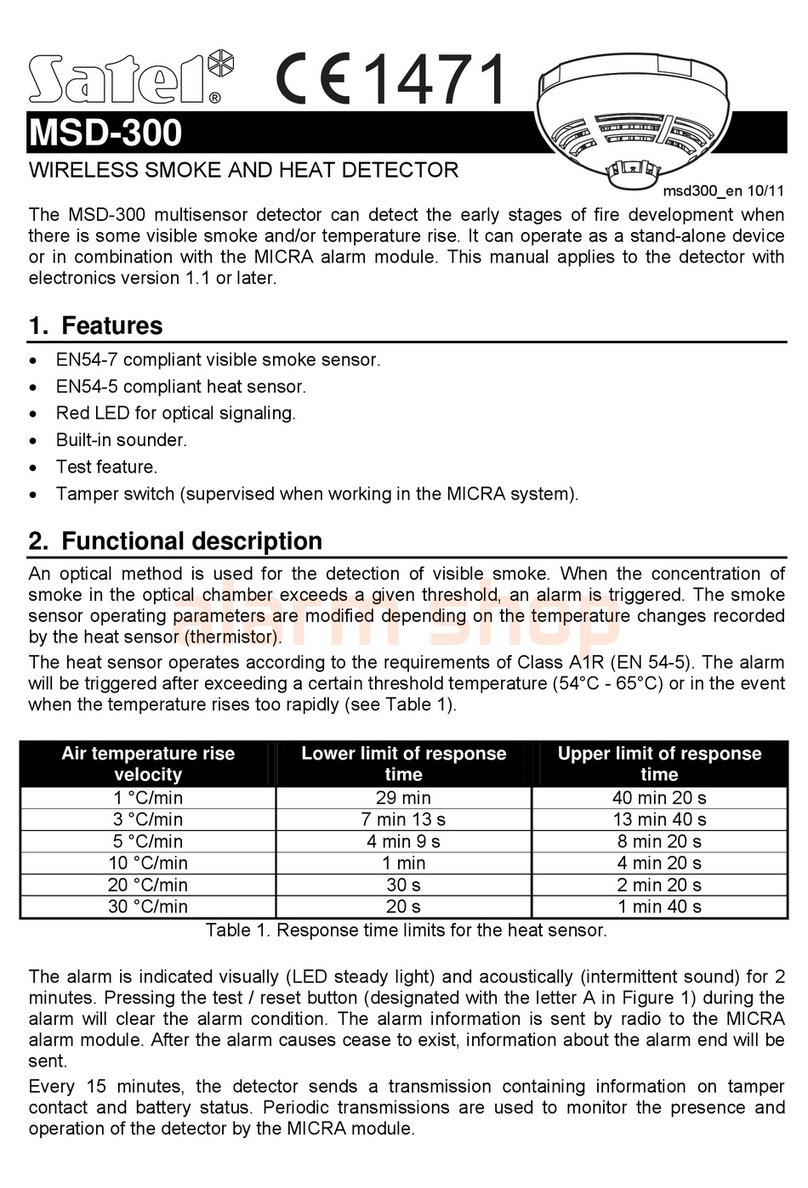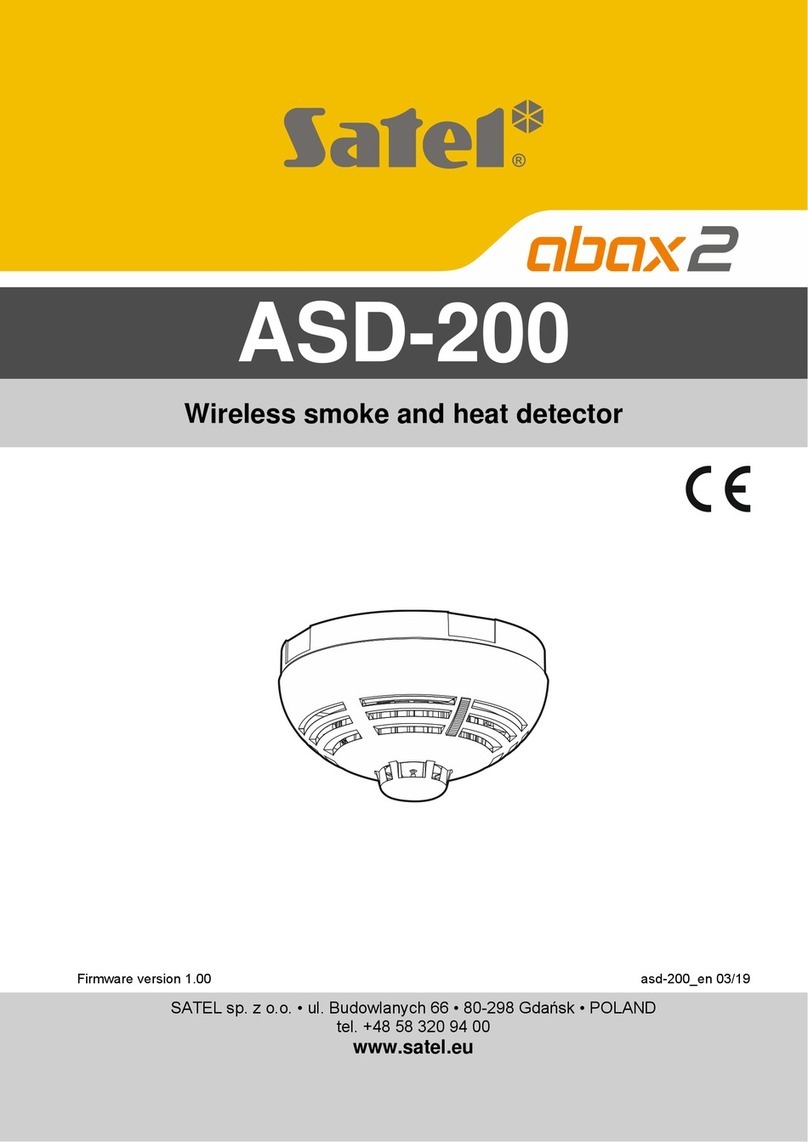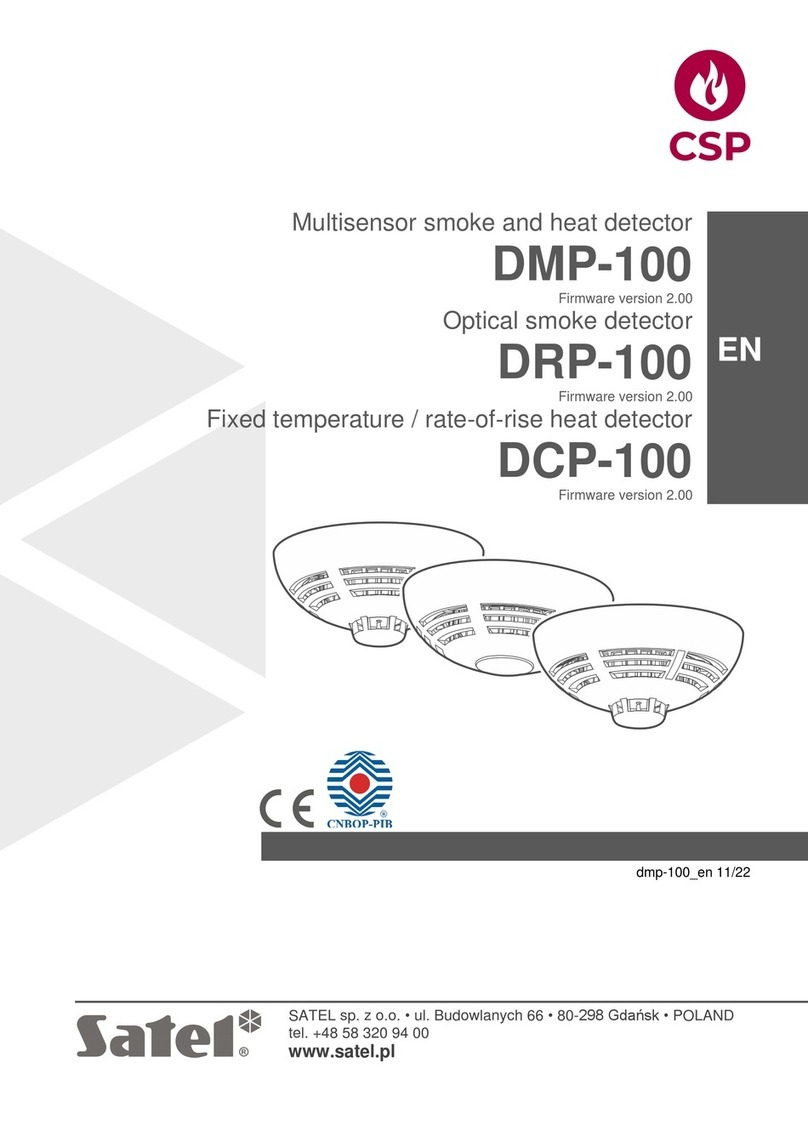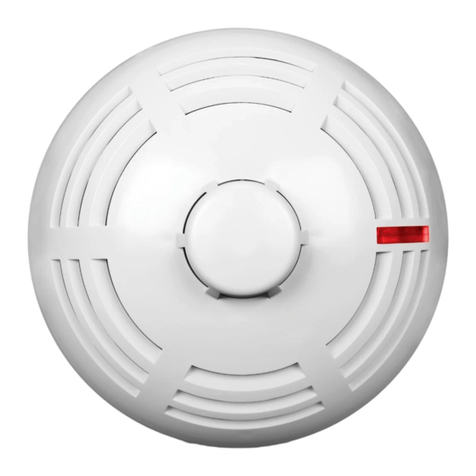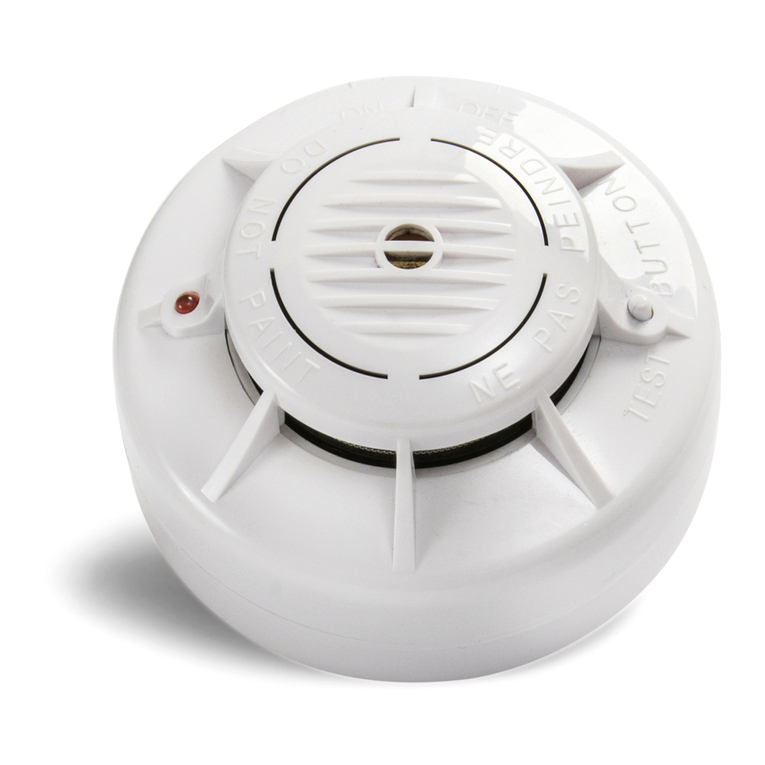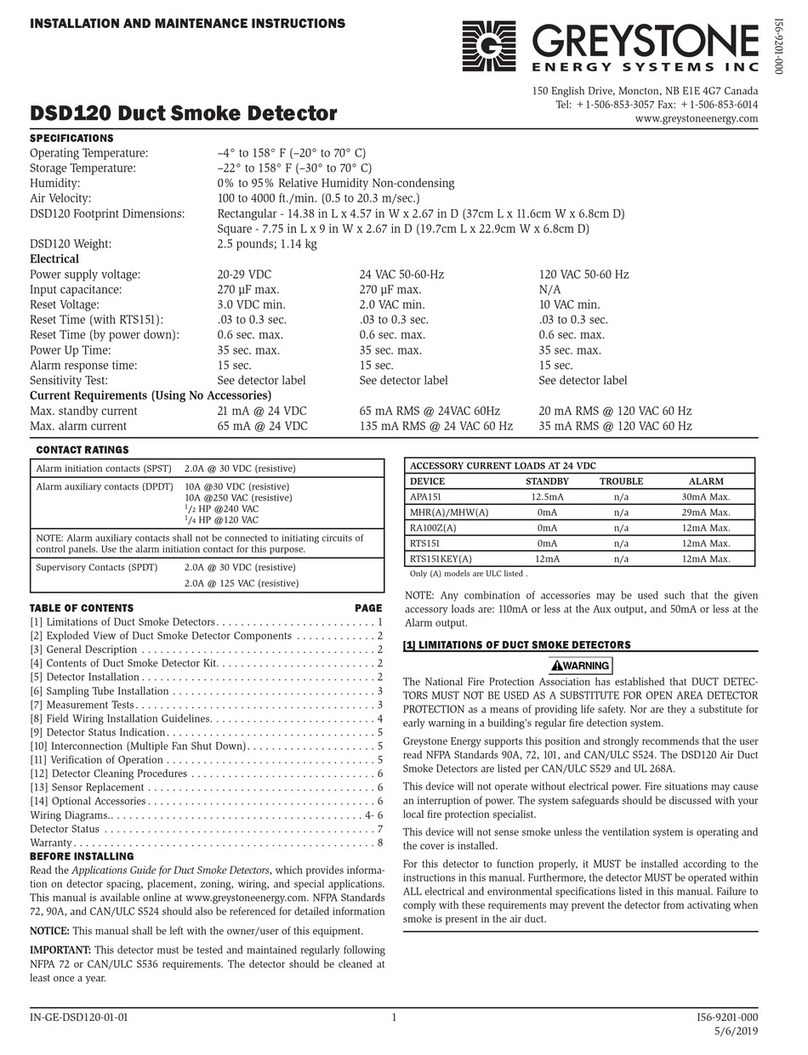
2 MSD-350 SATEL
periodic transmission – short flash.
3. Installation
The detector is designed for indoor operation. For typical home and/or office applications, the detectors should
be installed on the ceiling, at a distance of minimum 0.5 meter from the wall or other objects.
Do not install the detector in places with high concentration of dust and/or formation and
condensation of water steam. The detector should not be mounted in the vicinity of heaters and
cookers.
The detector enclosure can not be closed without the battery inserted.
Do not install the battery if the sounder is disconnected.
There is a danger of battery explosion when using a different battery than recommended by the
manufacturer, or handling the battery improperly.
Be particularly careful during installation and replacement of the battery. The manufacturer is
not liable for the consequences of incorrect installation of the battery.
1. Remove the plastic dust cap.
2. Turn the cover counter-clockwise (Fig. 2) and remove it (Fig. 3).
3. If the detector is to work as a stand-alone device, remove the jumper (designated by letter B on Fig. 4) from
the pins situated on the electronics board and skip the steps 5-8.
Note: After the battery is installed, removing / placing the jumper will have no effect on the detector operation.
4. Install the battery.
5. Enroll the detector in the wireless system (see the PERFECTA / PERFECTA-T / VERSA / VERSA IP /
VERSA Plus control panel installer manual, MICRA module manual or MTX-300 controller manual).
6. Put the detector at the place of its future installation.
7. Close and open the tamper contact. If the alarm transmission is received, proceed with the installation. If the
alarm transmission is not received, select a different mounting location and repeat the test.
8. Using wall plugs (screw anchors) and screws, secure the enclosure base to the wall. The wall plugs
delivered with the detector are intended for brick, concrete and similar mounting surfaces. For other
surfaces (e.g. drywall, wood, styrofoam), use other wall plugs, as required.
9. Replace the detector cover and lock it with the screw.
10. Press and hold down the test/reset button (designated with the letter A in Figure 2). Alarm should be
triggered.
11. If in the premises where the detector is installed, any work is being carried out that may lead to soiling of the
optical chamber, put a plastic dust cover on the detector and leave it there until the work is finished.
4. Maintenance
The detector should be subjected to regular checks for correct functioning. The periodic checks should be
carried out at least every 6 months. To check whether the detector is operating properly, press the test/reset
button (designated with the letter A in Figure 2). This should trigger an alarm.
Cleaning the optical chamber
Deposition of dust in the optical chamber may lead to malfunctioning of the device. It is recommended that you
have the optical chamber cleaned at least once a year. Cleaning the chamber is necessary when the LED
indicates fouling of the chamber (2 short flashes every 30 seconds).
1. Remove the screw fastening the cover (Fig. 1).
2. Turn the cover counter-clockwise (Fig. 2) and remove it (Fig. 3).
3. Remove the battery.
4. Disconnect the plug (designated by letter A in Fig. 4) connecting the sounder wires with the electronics
board.
5. Push outward the catches (Fig. 5) and take out the electronics board with the optical chamber (Fig. 6).
6. Push outward the catch securing the optical chamber cover (Fig. 7) and remove it (Fig. 8).
7. Using a soft brush or compressed air, clean the labyrinth in the cover, as well as the base of the optical
chamber, paying attention to the recesses where LEDs are installed.
8. Replace the cover of the optical chamber.
9. Lay the sounder wires in their corresponding grooves.
10. Secure the electronics board with the optical chamber in the cover mounting catches. The board must be
mounted so that the LED coincides with the light guide.




